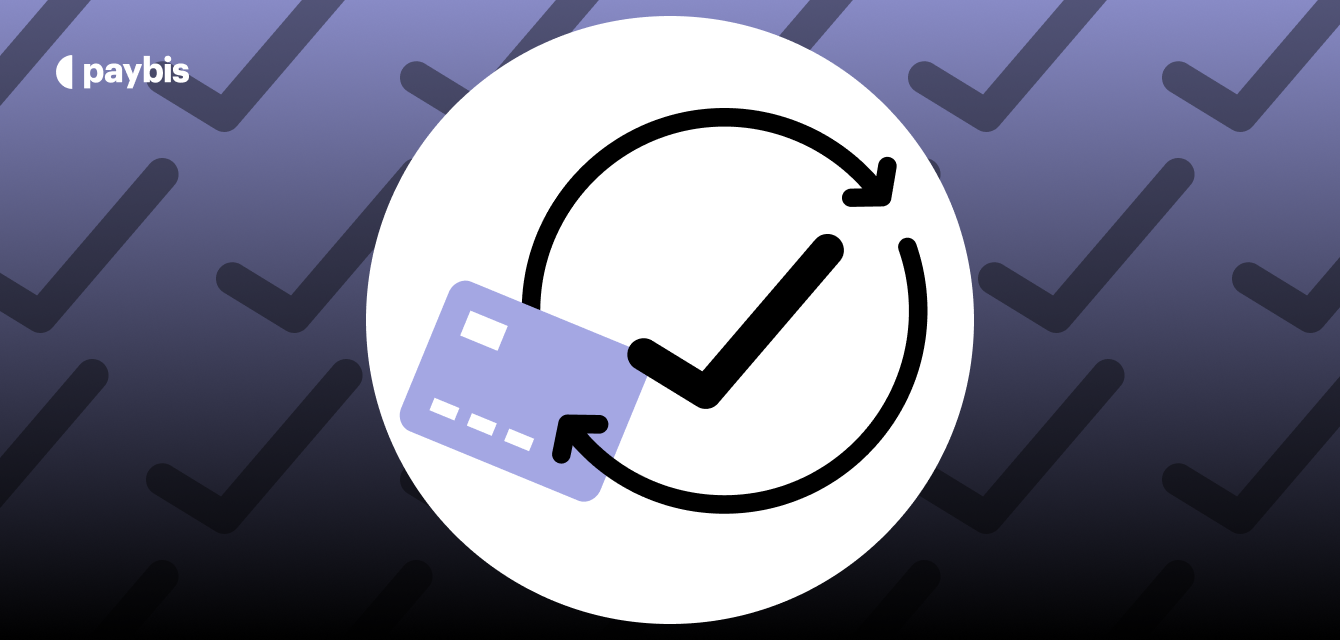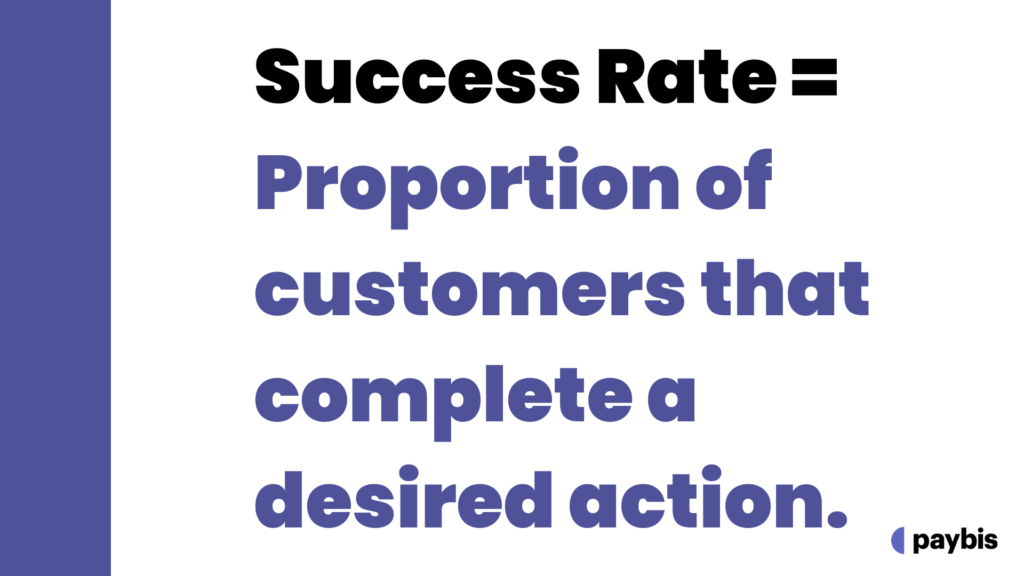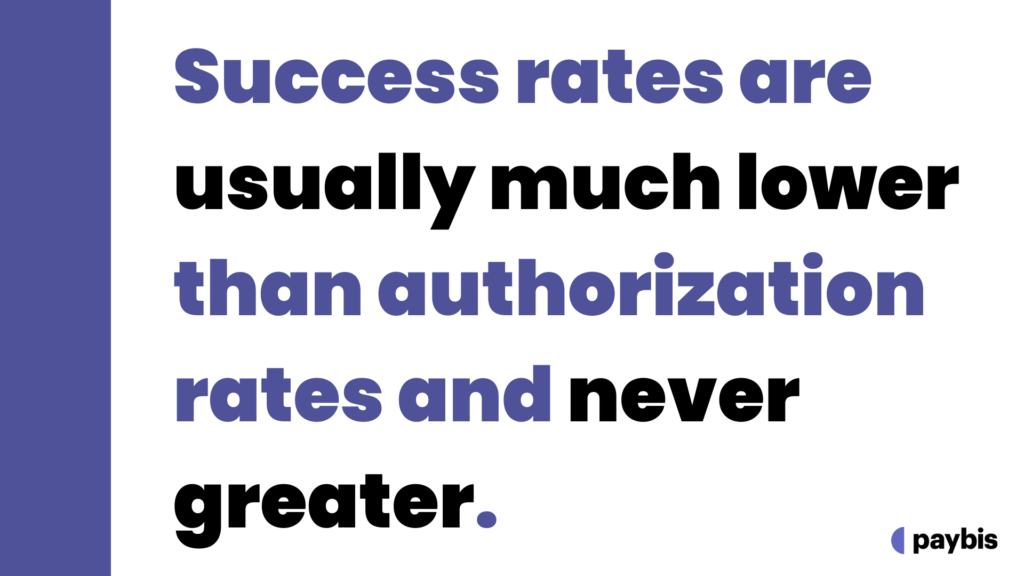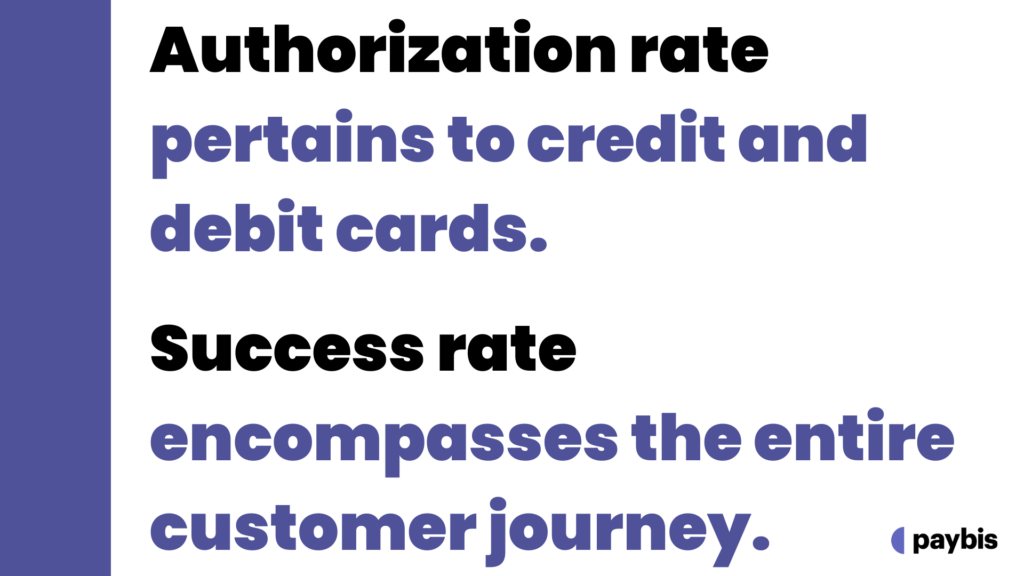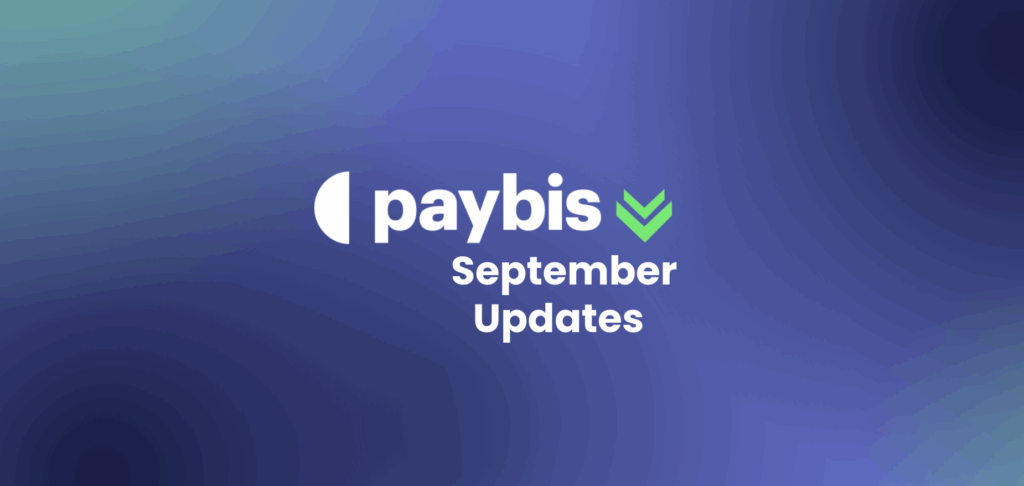Authorization vs. Success Rates: Which One Should You Track?
Online transactions are changing. Businesses have many metrics to choose from, each promising success and efficiency.
Here, it’s important to tell apart different rates like ‘Authorization’ and ‘Success’ rates. Although their areas of focus overlap, these metrics provide unique insights into transactions.
Every metric tells a different story about transactions. The gap between similar terms can determine growth or stagnation.
To steer your ship in the right direction, clear the fog around these terms. Focus on the metric that aligns with your business goals and strategies.
At Paybis, we are not new to this game. We have tracked, measured, and analyzed success and authorization rates for years. Many businesses confuse the two, causing them to lose focus and hinder growth.
This article will show the differences between success rates and authorization rates. You should measure one.
Table of contents
Decoding the Buzzwords
Authorization Rate
The ‘Authorization Rate’ shows how successful a credit card payment can be. It’s the story of how funds make their journey from a user’s account to a merchant.
But, there’s more to this journey than meets the eye.
When a payment is captured, it means the money is taken from the account and sent to the merchant. But, when funds are ‘authorized,’ they are merely reserved. This means the amount is earmarked for the merchant but has yet to make the actual journey.
A relatable example of this would be when you book airline tickets. For a specific time, typically one day, the funds are held and not accessible in your bank account. However, they have not been deducted from your account. This scenario clearly shows what authorization means in the real world.
Success Rate
The Success Rate shows how many people successfully complete a transaction after starting it.
Many things, such as KYC compliance and unexpected events, affect the customer’s experience here and cause them to abandon a transaction.
There are many reasons why this can happen. It could be because of technical problems or not following KYC rules. It could also be because of suspicious activity or entering the wrong address.
The Success Rate combines all these factors, giving a broad view of how well our sales funnel is coming together.
Debunking Industry Myths
People get confused by success and authorization rates, leading to false expectations.
Let’s unmask these myths and set the record straight.
Confusion between Success and Authorization Rates
The conflation of success and authorization rates is a prevalent industry myth.
Although they may appear to be in different worlds, it’s important to know they have different roles.
One aspect evaluates how quickly credit card transactions are authorized. Another looks at many factors affecting customers’ journey to complete a transaction.
Setting Realistic Expectations
Occasionally, people say success rates are 90%, but that’s not realistic.
Most people don’t complete transactions four out of five times, so these projections are unlikely to happen.
It’s possible to have a high authorization rate for payment attempts, but a high overall success rate is unlikely.
If you hear really high numbers, they might be misleading or talking about authorization rates.
Understanding the Differentials
The authorization rate is about credit card transactions. It shows if funds are allocated to the merchant successfully. It is like a snapshot of the first part of the transaction journey.
However, the success rate considers everything from KYC rejections to personal interruptions.
Unveiling the Real Picture
We can uncover the true situation by looking at the specific success rates and authorization, instead of relying on overly optimistic beliefs. This allows us to focus on practical measurements and avoid unrealistic expectations.
The goal is to explore thoroughly and focus on the specific details of each rate.
At Paybis, we show real numbers to our partners. Numbers that say what they mean are now clouded in jargon or lost in translation. We help you navigate the metrics and work with you to optimize every customer touchpoint through the White Label On/Off-Ramp solution.
Behind the Scenes of Authorization Rates
By studying the mechanics of authorization rates, we can understand the factors that affect credit card approvals.
Come with us behind the scenes to discover these important parts and learn how they affect approval rates.
The Role of Card Types and Brands
The type of card you use, like credit or debit, and the brand of card, like Visa or MasterCard, can affect how likely a transaction is to be approved.
Each has its own policies and criteria, affecting the chance of an authorized transaction.
Bank-Specific Crypto Policies
The financial institutions behind the cards hold significant power in the authorization process.
Some banks maintain stringent policies against crypto transactions (MCC 6051), acting as gatekeepers, possibly thwarting attempts to purchase cryptocurrencies and thus impacting the authorization rate negatively.
The Silent Settings – Personal Configurations
Sometimes, it’s the silent, personal settings chosen by the cardholder that decide the fate of a transaction.
When a cardholder chooses to decline Internet transactions, it can affect the authorization rate. This shows that personal settings can determine if authorization is successful.
How Paybis Helps with Increasing Authorization and Success Rates
Alternative Payment Methods: Paybis’s Trump Card
Understanding the diverse landscape, Paybis introduces alternative payment methods, especially in regions where the authorization rate is notably low, like Nigeria.
By implementing solutions such as mobile money and E-wallets, we combat the hurdles and ensure smoother transactions, adapting to the varied needs of customers globally.
When you integrate the Paybis White Label On/Off-Ramp on your website or app, your business can immediately offer customers 50+ APMs from day 1.
Cascade Routing System: A Symphony of Alternatives
The Cascade Routing System operates as a maestro, ensuring seamless transaction flow. If a main route can’t authorize a transaction, this system automatically sends the request elsewhere.
By leveraging multiple routes, the Cascade Routing System elevates success rates, allowing businesses to maximize their transactional efficiency and customer satisfaction.
Paybis uses a sophisticated Cascade Routing System to make transactions smooth and uninterrupted for partners and customers.
Fallback Functionality: The Safety Net
When there are problems with transactions, fallback functionality is like a safety net. It helps by offering different ways to make payments.
If a credit card doesn’t work, customers have other options like bank payment methods or e-wallets. These alternatives ensure that customers can still complete their transactions.
Fallback functionality reduces the chances of transaction abandonment by offering alternatives right away. This keeps customers engaged and lessens the loss of potential conversions.
Paybis integrates robust fallback functionality to provide varied and convenient alternatives to users, addressing their unique needs and preferences, thereby enhancing user experience and satisfaction.
Conclusion
The ‘Authorization Rate’ shows how credit card payments are approved. But the ‘Success Rate’ looks at the whole transaction journey, with each step having its own importance.
To optimize their strategies, businesses need a deep understanding of these terms and how they relate.
Now, an important question arises: What metric is most important for your business model?
Choosing between Authorization and Success Rates is not about picking one over the other; it’s about understanding the intricate dance between the two. It is this comprehension that enables businesses to create a symphony of seamless transactions and satisfied customers.
When businesses partner with Paybis, they are provided with an arsenal of technical support and customizability to increase both Authorization Rates and Success Rates.
Disclaimer: Don’t invest unless you’re prepared to lose all the money you invest. This is a high‑risk investment and you should not expect to be protected if something goes wrong. Take 2 mins to learn more at: https://go.payb.is/FCA-Info
